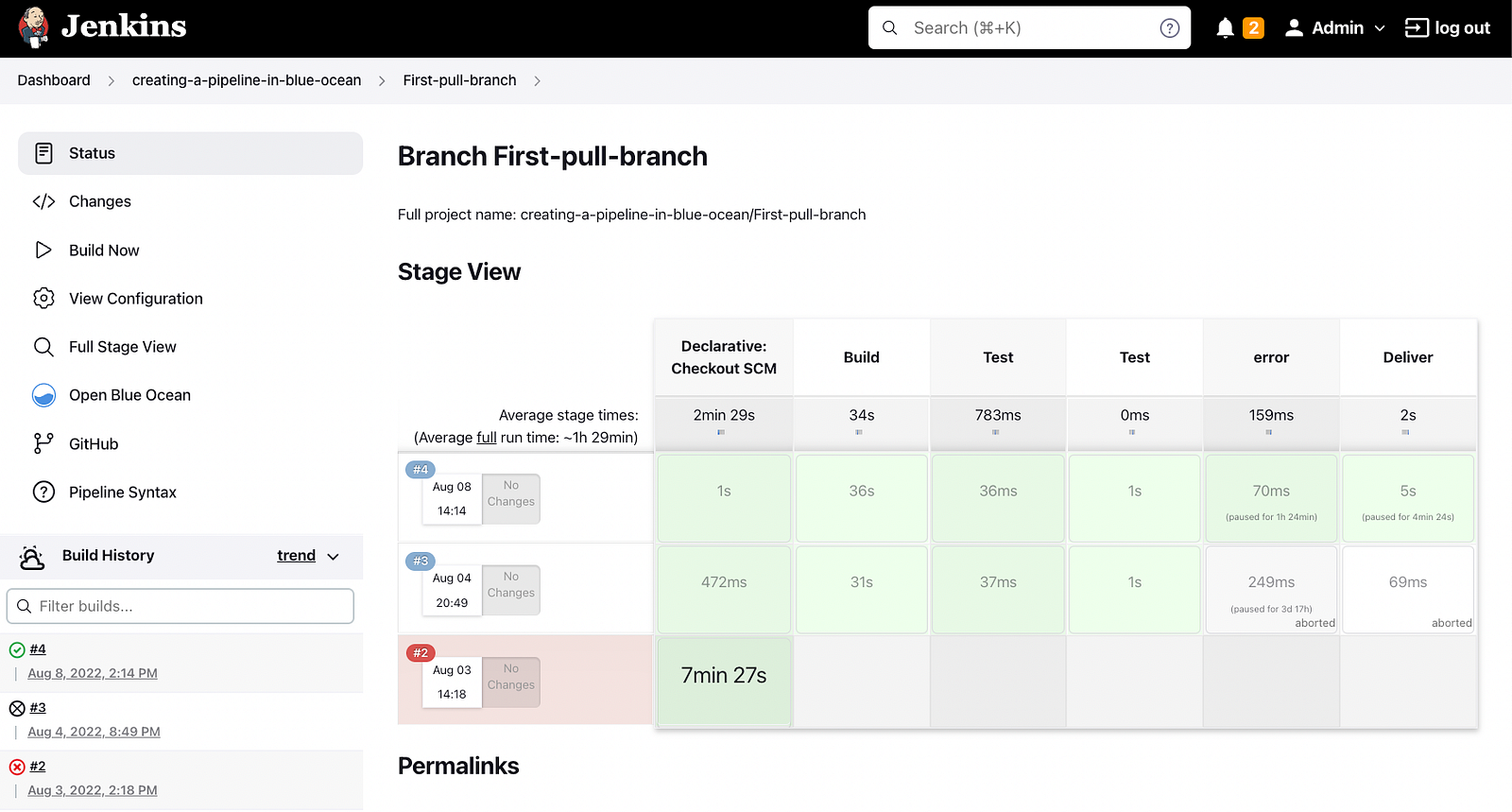🚀 Jenkins Demystified: The Ultimate Guide to CI/CD Mastery 🛠️
🚀 Jenkins Demystified: The Ultimate Guide to CI/CD Mastery 🛠️
“Don’t ship code without Jenkins!” — Every DevOps Engineer Ever 😎
Jenkins is the heart of automation in the DevOps world. Whether you’re deploying a Ruby on Rails app, running Python tests, or containerizing with Docker, Jenkins has your back. Let’s deep dive into the powerful features of Jenkins with examples, code, and pro tips. ✨

🔧 What is Jenkins?
Jenkins is an open-source automation server written in Java. It helps in building, testing, and deploying code with continuous integration and continuous delivery (CI/CD).
💡 Use Case: Automate your code deployment after every Git push!
🧱 Key Features of Jenkins (with examples)
1️⃣ Pipeline as Code (Jenkinsfile)
Create CI/CD workflows with code using a Jenkinsfile.
Example — Declarative Pipeline:
pipeline {
agent any
stages {
stage('Build') {
steps {
echo 'Building the app...'
}
}
stage('Test') {
steps {
echo 'Running tests...'
}
}
stage('Deploy') {
steps {
echo 'Deploying to production...'
}
}
}
}✅ Pro Tip: Always use declarative pipeline for clarity and standardization.
2️⃣ Plugin Ecosystem 🔌
Jenkins has 1800+ plugins to integrate with tools like Docker, GitHub, Slack, and more.
Example:
- Use Slack Notification Plugin to send build alerts to your Slack channel.
- Use Git Plugin to clone your repo with authentication.
git branch: 'main', credentialsId: 'your-cred-id', url: 'https://github.com/yourrepo.git'✅ Pro Tip: Only install necessary plugins to avoid performance bloat.
3️⃣ Distributed Builds (Master-Agent Setup) 🖥️🛰️
Run builds on different agents to scale easily.
Example:
Configure agent nodes to perform specific jobs like running heavy tests or Docker builds.
pipeline {
agent { label 'docker-agent' }
stages {
stage('Docker Build') {
steps {
sh 'docker build -t myapp .'
}
}
}
}✅ Pro Tip: Label your agents smartly and run parallel jobs for speed!
4️⃣ Easy Integration with GitHub/GitLab 🌐
Jenkins can auto-trigger builds on GitHub push using Webhooks.
Steps:
- Go to your GitHub repo → Settings → Webhooks.
- Add Jenkins webhook URL:
http://<jenkins-url>/github-webhook/ - Use
GitHub pluginin Jenkins job.
✅ Pro Tip: Use a GitHub Personal Access Token instead of username/password for better security.
5️⃣ Blue Ocean UI 🌊
A modern UI for Jenkins with visual pipelines, branches, and build logs.
🧠 You can visually manage your pipeline, check logs, and even debug.
✅ Pro Tip: Install Blue Ocean plugin for a better user experience for your team.
6️⃣ Email Notifications 📧
Send emails on build success/failure.
post {
success {
mail to: 'dev@yourcompany.com', subject: 'Build Success 🎉', body: 'The build passed!'
}
failure {
mail to: 'dev@yourcompany.com', subject: 'Build Failed 🚨', body: 'Fix it fast!'
}
}✅ Pro Tip: Avoid spamming your team. Only send emails on failure or key deploy stages.
7️⃣ Parameterization 🧮
Add parameters to your pipeline for dynamic builds.
parameters {
string(name: 'BRANCH_NAME', defaultValue: 'main', description: 'Git Branch to Build')
}✅ Pro Tip: Use parameters to create reusable pipelines across environments.
🛡️ Security Best Practices
- 🔐 Use credentials binding plugin for secrets.
- 👥 Set up role-based access control.
- ✅ Use HTTPS for Jenkins URL.
⚙️ Jenkins + Docker Example
Want to run Jenkins inside Docker? Here’s a quick setup:
docker run -p 8080:8080 -p 50000:50000 \
-v jenkins_home:/var/jenkins_home \
jenkins/jenkins:lts✅ Access Jenkins at: http://localhost:8080
💯 Pro Tips for Jenkins Success
🔥 Use Jenkinsfile in your repo — version-controlled pipelines are powerful
📁 Use shared libraries for large orgs
📦 Use stash and unstash for passing artifacts
🐞 Always log steps for debugging
🧪 Automate tests in parallel stages
📊 Use Build Trends plugin to monitor failure rate
🏁 Final Thoughts
Jenkins isn’t just a CI/CD tool. It’s your automation powerhouse. 💪
Whether you’re building a microservices empire or deploying a personal portfolio, Jenkins scales with you.
“Automate the predictable so you can focus on the unpredictable.” — David Thomas
Comments
Post a Comment